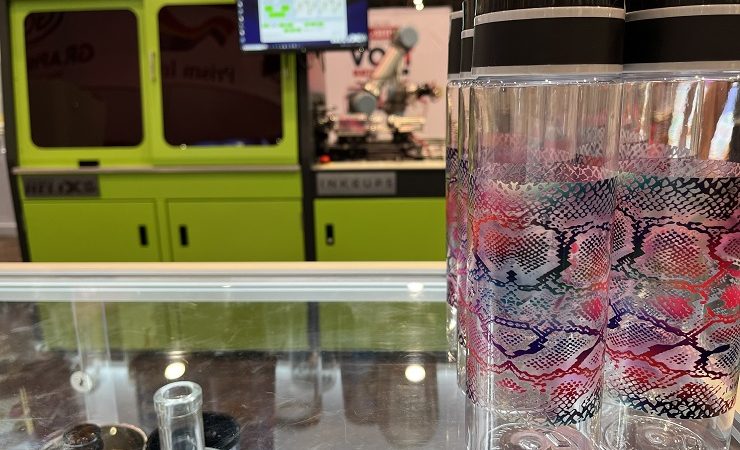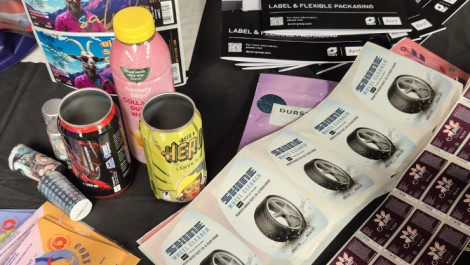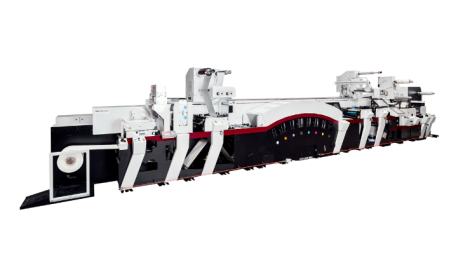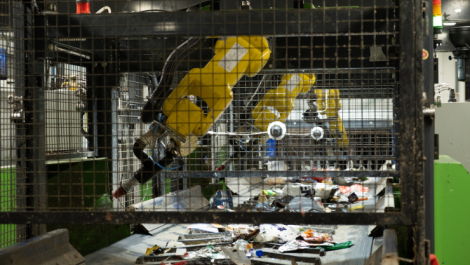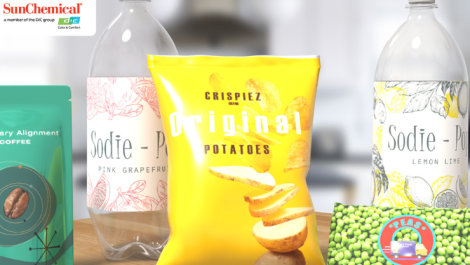Direct-to-object printing has seen vast improvement of late, opening up new possibilities for printing and catalysing creativity across numerous applications. Inkcups’ CEO Benjamin Adner and Gregory Harwood, digital product manager, share their take on this.
Printing methods have changed and evolved over the years. What once took hours to print, now takes minutes with today’s technology. Direct-to-object (DTO) printing is one method that has seen vast improvement as of late. Still a relatively new technique, DTO has opened up new possibilities for printing and catalysing creativity across numerous applications.
DTO is the process of taking a digital image and directly printing it onto a three-dimensional object. This method eliminated the additional steps of printing an intermediary film then applying it to the end substrate. DTO printing machines host a number of printheads that propel tiny droplets of UV ink directly onto the 3D product, which is held in place by specially designed tooling. It offers high-quality, multicolour graphics that are jetted directly onto the object, saving money and time, simplifying changeover and reducing waste. With the DTO printing market projected to reach $5 billion by 2030, according to research by Future Market Insights, it’s no surprise how many companies have turned to this method and are relying on DTO even more.
DTO upgrades
In recent years, manufacturers have made significant advances in DTO printing to meet market trends and solve customer challenges. Whether it’s small format, wide format flatbed or industrial cylindrical printers, there is an update or new feature for each category to enable successful print outcomes on various substrates.
The most important step before printing begins is preparing the substrate for proper adhesion. The best way to do that is through various pre-treatment systems. The basic ones are a primer wipe or spray, as well as flame pre-treatments. However, a combination of these has proven to be most effective.
With glass, for example, manufacturers have developed an option that utilises a flame treatment technique and sprays a water-based primer. This method starts with uniformly flame treating the substrate at the proper temperature to eliminate debris and coatings and achieve a smoother, sleeker adhesion result. Then, each item is evenly sprayed with the primer for long-term durability. These two steps combined promote adhesion to glass and ensure the printed item can withstand up to 200 residential washes and up to 600 industrial washes.
Since these are pre-treatments handled by operators and primarily used on drinkware items that people will use, they must comply with compliance testing standards set by the Food and Drug Administration (FDA) and other industry organisations.
An obstacle DTO helps combat is labour shortages. DTO printing machines paired with automated systems and robotics allow the job to get done more efficiently than with a human worker. Here, two areas have been automated: artwork preparation and the loading and unloading of products to a machine.
Today there is software available to handle the artwork preparation process. Operators simply upload the design, and the software takes care of the rest – picking and creating the additional layers of optional primer, white and varnish. A process that once took graphic designers up to 15 minutes per piece of artwork now takes less than 15 seconds with workflow automation. This allows for added flexibility and less demanding skill sets required for operator positions in the already tight job market. Plus, with the nature of print-on-demand DTO orders, automation is a necessity to keep up with product requests.
A more physical aspect of DTO is loading and unloading an item to and from the printer. This is repetitive and can quickly become a tedious and mundane task for a human operator. Thanks to robot arms this whole process can now be automated. Robotic arms offer three positive advantages: consistent production times, 24/7 production capabilities and low to no down time.
With automation, operators can focus on the most important thing, i.e. the pursuit of higher quality printing in less time.
Safety first
Safety is a major priority not only for humans handling DTO printing systems and accessories, but also to protect those who will drink or eat from DTO-printed items. From the ink being used to the machine itself, today’s DTO processes must meet compliance and safety requirements and pass several industry tests in order to print. It’s been a major process improvement for DTO.
Many DTO systems meet the standards of the FDA 21, Consumer Product Safety Improvement Act, ASTM International (formerly American Society for Testing and Materials) and more. Properly treated DTO items pass tests like lip and rim testing, heavy metals testing and volatile and semi-volatile organic compounds testing. All of these ensure that printed items are safe for humans to use.
Additionally, it’s also safe for operators to work in DTO environments. Going back to primers, operators used to apply chemicals manually and gloves were the only means of protection. Now, operators can rely on jettable primers. Just like the ink, UV primers are simply jetted onto specific areas on a vessel, which will later be printed on. These decrease employee exposure to any primer chemical by removing it quite literally from the hands of the operator.
Other sought-after safety precautions include light curtains around the machine, scanners to ensure that the printer only runs when it’s safe, and environmentally friendly machines with self-containing exhaust systems.
POD DTO
For a boost in efficiency, DTO printers can implement print-on-demand workflows. A DTO system equipped with print-on-demand capabilities streamlines the operator’s tasks to a simplified workflow of receiving the order, picking the product, placing the corresponding artwork’s barcode on the product, scanning the barcode, and printing.
An e-commerce business utilising a print-on-demand workflow makes it possible to transfer artwork or photographs from the comfort of a customer’s couch to the production floor print cue in a matter of 30 seconds. Print-on-demand achieves that as well as other workflow management tools, such as automated artwork preparation software that can prepare print-ready files in seconds.
Additionally, this method helps meet the challenge of sustainability. Print-on-demand is a more sustainable process since it only prints to fulfil orders when placed and does so in a more environmentally conscious way. With digital printing, there are no screens, plates, transfer paper, water, or heat required, so there is no electricity wasted during the printing process. An image is printed directly onto the product after the online order is placed and then shipped for delivery, saving set-up time, the labour and waste associated with creating screens and frames, and other resources that are often harmful to the environment. Numerous countries (especially in the EU) have bans going into effect on certain single-use products packaging.
This article was first published in the November/December 2022 issue of Digital Labels & Packaging, which you can read online here

